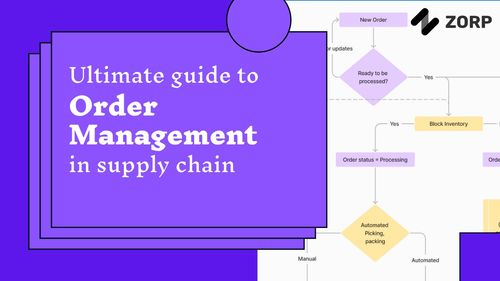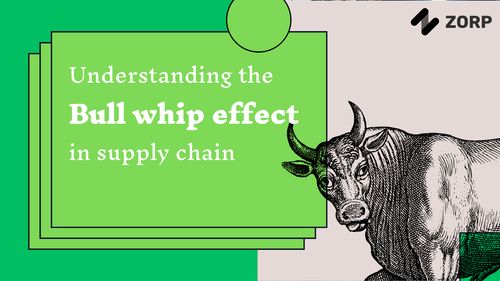You want to develop an app. You have a great idea and want it in the store as soon as possible. Maybe you’re working with a team of developers, or maybe it’s just you and your computer. Either way, there are some costs involved in creating an app that should be considered before diving into development:
App development is a challenging task, and not everyone can build a good app. Many factors affect the cost of building an application, including the type of app, functionality, design, and other requirements.
You might have heard some people saying that their app development costs were less than $1000 or even lesser than $500 but do not believe them because this is one of the biggest mistakes you can make when planning to build your own mobile application.
In this article, we will tell you about different factors which will help you find out how much it costs to develop an app.
This article will cover all three factors in detail so that you can get a sense of what developing an app looks like on paper—and whether or not it makes sense for you.
Developing an app can take anywhere from two months to two years, depending on what type of app you want. If you’re looking for something simple like a calculator or flashlight, the process will go quickly because those apps are fairly straightforward and easy to build. But if you want something more complex, like a game or social media app that needs to connect with other platforms and make changes based on user input, then you’ll need some serious help.
In general, you should expect to spend anywhere between six months and two years developing your app. The cost of hiring developers: If you’re not a developer yourself, then you’ll need to hire one or more people who are. The price for this will vary depending on what kind of app you want to develop, how many developers are needed, their location, etc.
Example: If you want a simple calculator app and only need one developer, then you’ll probably pay somewhere between $5,000 and $10,000. But if you want something complex like an augmented reality game that uses GPS technology to track players’ locations and make real-time changes, expect to spend anywhere from $50,000 to $100,000 on development costs alone.
Depending on the complexity and the duration of the app development, the price will vary according to a variety of factors. At $40 per hour, the average price will be:
How much does it cost to build an app? The cost of developing a mobile app depends on the type of app you are building, its location, and the number of features needed. According to the Magic Quadrant study by Gartner MADP, the lowest-priced development in 2017 ranged between $25,000 and $100,000, while the highest price was set at $100,000. For more complex applications that include enterprise integration and complex security features, costs can reach as high as $500K per application.
Here are some statistics to consider based on various sources and app development methodologies:
The cost factors include:
The cost of developing an app depends on its type and scope. App types can be classified into four segments: games, utilities, native, and AR/VR apps.
The cost of developing a game app is higher than utility apps. In fact, it costs about $1 million to develop a game app that has average features. On the other hand, it takes about $250k-300k for the development of a utility app with average features in 2022.
The cost of developing a native app is higher than that of hybrid apps because there are more elements needed to be coded from scratch in the case of native applications than there are for hybrid ones.
The cost of developing an AR/VR application is higher than that due to the complex user interactions involved in such kinds of applications. It makes them unique compared to traditional ones, where users only interact with their screens through touch gestures or clicks on buttons etc., but do not necessarily enter into immersive environments as games do.
Since these experiences require additional hardware components such as sensors and cameras installed at different locations within buildings - they cannot be achieved by regular devices like laptops or tablets hence making them expensive projects upfront.
The cost of developing a web application is lower than that of developing native apps because there are fewer elements to code from scratch. The development process is also faster because it can be accessed from any device with an internet connection.
Native apps are faster and more responsive than web applications since they can access the device’s hardware directly, which is not possible with a web application. The latter has to be downloaded first before users can access its features.
Web applications are easier to maintain than native apps since they only require users to update the application’s code which is stored on a remote server. The latter requires users to install updates manually, which can be time-consuming for some businesses.
Native apps are better for engaging with customers since they can store information about their preferences. This is possible because of the device’s hardware, which does not have access to a web application. Native apps can also send push notifications to users, which is not possible with a web application unless you develop an app for each platform (iOS and Android).
The cost to build an app depends on the region where you are located. If you are from the United States, then your app will be more expensive to develop than if you are from India or Europe. The most expensive location for building an app in North America, with an average price of $45k for a basic Android or iOS mobile application.
The second most expensive region is Europe, with $33k as an average price tag for developing a simple application on Android or iOS platforms. The third comes the Middle East ($23k), and lastly, Latin America ($12k).
As far as the Asia Pacific is concerned, they have been seeing growth in their market since 2017, which has contributed to making their rate decrease this year by 15%. However, if we look at individual countries such as China and Japan, their rates increased by 7% during this period because those countries have always had high rates compared to others around them.
Besides the cost of building an app, developers also need to consider other factors, such as whether they will build a native or hybrid application. Native apps are built using specific software languages for each device and platform, while hybrid apps use web technologies like HTML5 and JavaScript.
A native app is software that is developed specifically for a device and platform. It has its own codebase, which means it can run independently of other platforms.
The cost of developing an app is a major concern for most businesses. Even though the competition in this market is fierce, it does not mean that you can't survive in it without an app. However, having one will give your business a lot of advantages and will allow you to reach out to more people who are interested in your products or services. It’s better if you have an expert team working with you during this process, as it will help reduce the risk of making mistakes and also save time and money. So what really affects app building cost?
The first thing that determines how much an app cost is its scope, which includes features such as data collection/storage, payments integration (if applicable), etc. Design considerations such as UI/UX designs; other elements include code optimization (JavaScript libraries), deployment platforms like AWS Lambda or Heroku, etc., maintenance costs, etc.
The other thing that affects app building cost is the development team, which includes the number of developers working on it as well as their expertise in different technologies such as Java, Swift, etc.
The last factor that affects app building cost is the platform where you want to deploy your app. Suppose you’re planning on launching an Android app and have a budget of $10,000 for it. In that case, it may not be possible because not many developers in the market are Android development experts, and most focus on iOS instead.
So, if you want to build an app that has a good user experience, is secure, and performs well, then it’s essential to know what affects app building costs.
There are several options for app development, which include:
Let's look at some of the cost-saving options.
One of the best no-code platforms in 2023–2024 is ZORP, which offers a complete platform for developing mobile apps. It provides you with all the necessary tools to build an app and helps you save money in the process. The platform offers a wide range of templates from which you can select any one according to your needs and requirements. You can also customize these templates by adding your own content or images using their easy drag-and-drop interface.
App development costs have been increasing at a steady rate for the past few years, and the trend will continue into 2022. The main driver for this acceleration is the growing number of apps with more advanced features and functionalities introduced yearly. In addition to that, outsourcing is increased due to rising demand from various industries such as healthcare, education, and media & entertainment.
In the end, we can say that the cost of app development in 2022 will be on the rise, but not to a large extent. It will still be possible to develop an app within budget. The key takeaway is that you should begin with a plan and set some goals for your project. This helps in keeping track of how much time/money is being spent on development and keeps everyone involved informed about where they are at any given moment. With that being said, we’d emphasize the fact that ZORP is worth a try!
The average cost of developing an app depends on various factors like platform support (iOS or Android), features required by clients (native or hybrid), design complexity, etc., which makes it difficult to provide a fixed price for all types of projects. That said, here are some typical estimates:



